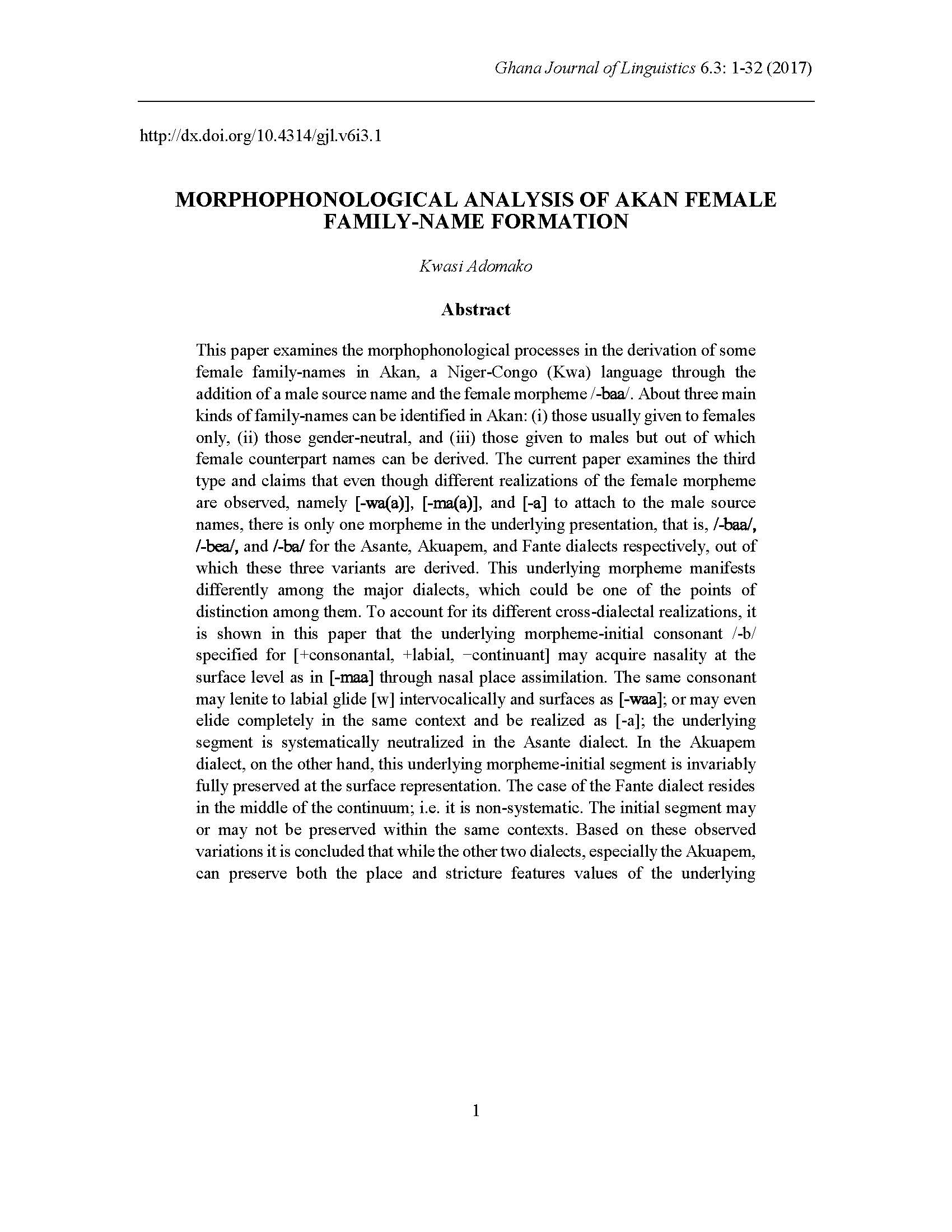Morphophonological Analysis of Akan Female Family-Name Formation
DOI:
https://doi.org/10.4314/gjl.v6i3.152Abstract
This paper examines the morphophonological processes in the derivation of some female family-names in Akan, a Niger-Congo (Kwa) language through the addition of a male source name and the female morpheme /-baa/. About three main kinds of family-names can be identified in Akan: (i) those usually given to females only, (ii) those gender-neutral, and (iii) those given to males but out of which female counterpart names can be derived. The current paper examines the third type and claims that even though different realizations of the female morpheme are observed, namely [-wa(a)], [-ma(a)], and [-a] to attach to the male source names, there is only one morpheme in the underlying presentation, that is, /-baa/, /-bea/, and /-ba/ for the Asante, Akuapem, and Fante dialects respectively, out of which these three variants are derived. This underlying morpheme manifests differently among the major dialects, which could be one of the points of distinction among them. To account for its different cross-dialectal realizations, it is shown in this paper that the underlying morpheme-initial consonant /-b/ specified for [+consonantal, +labial, −continuant] may acquire nasality at the surface level as in [-maa] through nasal place assimilation. The same consonant may lenite to labial glide [w] intervocalically and surfaces as [-waa]; or may even elide completely in the same context and be realized as [-a]; the underlying segment is systematically neutralized in the Asante dialect. In the Akuapem dialect, on the other hand, this underlying morpheme-initial segment is invariably fully preserved at the surface representation. The case of the Fante dialect resides in the middle of the continuum; i.e. it is non-systematic. The initial segment may or may not be preserved within the same contexts. Based on these observed variations it is concluded that while the other two dialects, especially the Akuapem, can preserve both the place and stricture features values of the underlying morpheme-initial /-b/ of the female morpheme, the Asante dialect only preserves the value for the former, and systematically neutralizes that of the latter. This observation is formalized within the Optimality Theory.
Keywords: Akan, family-name, morphology, phonology, derivation.

Downloads
Published
How to Cite
Issue
Section
License
The Ghana Journal of Linguistics is published by the Linguistics Association of Ghana, P. O. Box LG 61, Legon, Accra, Ghana.
LAG Email: linguisticsgh@gmail.com. Website: http://www.laghana.org
GJL Email: gjl@laghana.org Website: http://www.laghana.org/gjl
© Linguistics Association of Ghana and individual authors, 2023.
